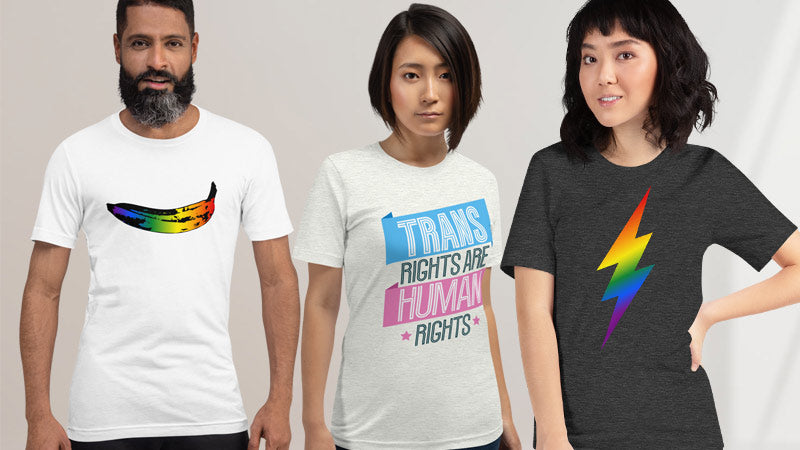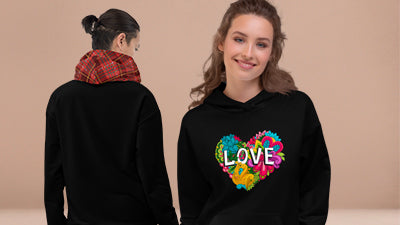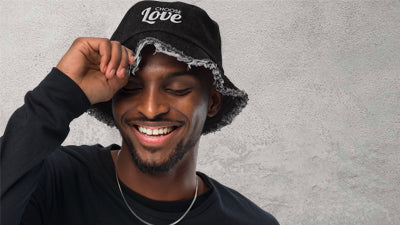Intersex Awareness Day and Intersex Day Of Remembrance

When Are Intersex Awareness Day and Intersex Day of Remembrance?
Intersex Awareness Day is an annual event that takes place on October 26th. It was created by activists Emi Koyoma and Betsy Driver back in 2003, who chose the date as it was the anniversary of a 1996 protest in Boston, Massachusetts by the no longer active Intersex Society of North America.
On November 8th each year Intersex people observe Intersex Day of Remembrance. This was first observed in 2005, with the date having particular meaning for the community, as it’s the birthday of Intersex icon Herculine Barbin. He was a French intersex person who lived from 1838 to 1868, known for his memoir. She was assigned female at birth but was later reclassified as male, with his name changed to Abel, after a physical examination. Tragically, he took his own life at the age of 29, and has since become an iconic figure in intersex history.
Many in the Intersex community consider the period between October 26th and November 8th to be a time for focusing on Intersex issues, with events and talks taking place throughout the fortnight.
What is Intersex Awareness Day?
Inspired by the grassroots activism of the Intersex Society of North America, led by Morgan Holmes and Max Beck, Intersex Awareness Day is an international public demonstration of pride and protest. Other organisations involved were Hermaphrodites with Attitude and allies Transexual Menace.
It started as a protest against the American Academy of Pediatrics and their practices of operating on Intersex babies and children. There were talks, chants, banners and swapped personal anecdotes. Initially, they wanted to participate in the conference, to challenge the AAP’s views that cosmetic surgery on Intersex youth was best practice, but they were met with hostility.
Now, the day is bigger than ever, and organisations and businesses around the world observe it as a chance to honour their members and employees. Intersex Awareness Day can provide many benefits to the Intersex community, from opening dialogues that engage wider audiences and change public opinion, to celebrating the joys of Intersex identity.
OUR INTERSEX COLLECTION view the full collection
What is Intersex Day of Remembrance?
Also known as Intersex Day of Solidarity, it is more widely observed in Europe, and was inaugurated by Joëlle-Circé Laramée, the Canadian spokeswoman for Organisation Intersex International. Whilst Intersex Awareness Day is also a time for celebration and joy, Intersex Day of Remembrance is often more sombre and reflective, with events discussing difficult topics such as genital mutilation, the drawbacks of a rigid binary gender system, and sexism within that system. Its emphasis on Intersex human rights takes form in academic and theoretical ways, for example analysing French philosopher Michel Foucault’s study of Herculine Barbin.
What Does Intersex Mean?
Intersex is an umbrella term for a variety of people who are born with sex organs that don’t fit the typical ideas of binary “male” and “female. This can be found in many forms, for example unique chromosome patterns, gonads (reproductive glands such as testicles and ovaries) and genitalia (such as penises and vulvas).
When we are born, we are assigned a sex, either male or female, usually by a doctor or medical professional. 1 in 4500 babies are born with “ambiguous genitals” meaning doctors struggle to decide on one side of the gender binary or the other. In these cases, doctors usually surgically operate to remove one part of the genitalia, for example the penis, leaving the vulva, and ultimately assigning the child a female gender.
In most cases, Intersex people are born with less “ambiguous genitalia”, but their anatomy may look different to that of a “typical” binary male or female. Doctors usually operate in these instances too, for “cosmetic” reasons. They may be easier to define as male or female, and many Intersex people choose to continue to identify as their assigned gender for the rest of their life, but many feel they have been incorrectly assigned and that the surgery performed on them left them with genitalia that conflict with their gender identity.
Intersex people may identify as Trans or Non-Binary or use the Intersex label to define their gender.
In the past, many terms were used for Intersex people, including “hermaphrodites” and “congenital eunuchs”. But these terms are now rightly considered inappropriate, dehumanising and stigmatising.
Why Is Intersex Awareness So Important?
Sociologist and professor Morgan Holmes remembers “barbaric attitudes and aggressive surgeries” towards Intersex people in the 20th Century. Both she and Max Beck “had had surgeries relatively late in childhood; neither of us had experienced a gentle or respectful approach to our bodies, and I knew for certain that my own surgeon had gone on within months of performing my clitoral “reduction” in 1974 to a position at Johns Hopkins, where he would live out his career.” She describes this doctor as a “horrible man who had viewed my tiny, 7-year-old body as abhorrent before surgery and as presenting a “pleasing cosmetic result” afterward.”
In a world in which non-intersex doctors and medical professionals decide which bodies are “normal” and which are “disordered”, the need for Intersex awareness is essential. Experts estimate that 1.7% of the world’s population are born with Intersex traits (comparable to the number of people with red hair) and their voices need to be heard.
One main problem is lack of awareness and understanding from non-Intersex people, stemming from Intersex people’s erasure from education in sexual health and biology classes. Another is the long-standing practice of doctors making decisions on the behalf of Intersex babies and children who are too young to consent or understand their options.
Intersex awareness can help with both of these issues. Firstly, to increase understanding of Intersex people and communities, and secondly, to amplify their voices of protest against unjust medical practices. Awareness also needs to be raised so Intersexuality can be destigmatized.
Some parents disown, abandon or even, in extreme and abhorrent cases, kill their children when they discover they’re Intersex.
The more non-Intersex people are aware of Intersex issues, the more solidarity and support they can give. It’s hard to argue with the claim that everyone should be allowed the right to decide whether to have, or not to have, serious surgeries.
People can also learn that Intersex people can look very different; that there is no one way Intersex people look, and that their individual gender identities should be respected. Some believe that Intersex people are extremely rare, but their existence is far more common than people realise. The more widespread awareness becomes, the more Intersex people will feel comfortable talking openly about themselves and their issues.
How is Intersex Different from Transgender?
The definition of Transgender is someone who identifies as a gender different to the one they were assigned at birth. But many Intersex people identify and live happily as their assigned gender.
There are, however, some Intersex people who identify as a different gender (either the opposite binary or Non-Binary) and these people may also identify as Trans.
So while there is an overlap, the two identities are separate. The important thing is to respect an individual person’s identity, and appreciate the nuances between them.
The main difference is that Intersex people are born with a combination of “typically” male and female sex characteristics, whereas non-Intersex Trans people aren’t.
Some Intersex Icons You Should Know About
River Gallo – Salvadoran-American actor, filmmaker, and model
Caster Semenya – South African middle-distance runner, 2x Olympic gold medallist
Pidgeon Pagonis – American activist, writer, artist and consultant
Morgan Carpenter – Australian bioethicist, activist and creator of the Intersex flag
Sean Saifa Wall – Researcher and activist
Valentino Vecchietti - Activist and creator of the Intersex Inclusive Pride Progress Flag

Why Do Intersex People Have Their Gender Decided For Them? And What Effect Does That Have On Them?
Intersex people have their gender decided by medical professionals to fit them into our heteronormative society’s binary system of gender. Even today, all babies are assigned either male or female, even with ambiguous genitalia. Often, they are surgically operated on to easier assign them one or the other. Intersex activists are fighting to change this. Just like Non-Binary people are fighting for a gender-neutral option on passports and other forms of identification, Intersex people deserve to be recognised as Intersex from birth, not just fit into a box of male and female.
This naturally makes Intersex people feel invalidated, and that there is something wrong with their gender and identity. It can lead to long-term issues such as low self-esteem, depression, and dysphoria. Many Intersex people feel pressure to conform to their assigned gender, leading to inauthentic behaviour which can feel dehumanising.
Intersex activists demand that people born with ambiguous gender characteristics are not forced into the binary of male and female, both in terms of classification and societal pressure to conform.
The Intersex Pride Flag
Designed in 2013 by Morgan Carpenter for those with ambiguous sexual characteristics. The Intersex Pride Flag moves away from stripes to make it incredibly easy to identify. The yellow and purple colours are used because they are neither blue nor pink, and yellow especially is seen as an intersex colour. The circle is explained on the page launching the flag as, "unbroken and unornamented, symbolising wholeness and completeness, and the right to be who and how we want to be.”

How Can You Support Intersex People?
If you have Intersex friends you should ask your them how they would like you to support them. But there are many ways to offer support.
-
Educate yourself about the issues Intersex people face, such as stigma and medical intervention.
-
Think about the language you use, avoiding outdated terms such as “hermaphrodite” or commenting on people’s bodies or gender variance.
-
Listen to Intersex people when they talk about their lived experiences and check whether they are happy for you to share their personal story with others. Some may want you to put some effort to raise awareness on their behalf, whilst others may trust you to keep quiet. Never out anyone without their consent.
-
Start conversations about the Intersex identity with non-Intersex people and make sure they are on the same page with wanting to understand the issues and support the community.
- Sign petitions, attend protests and events, and donate to charities.








